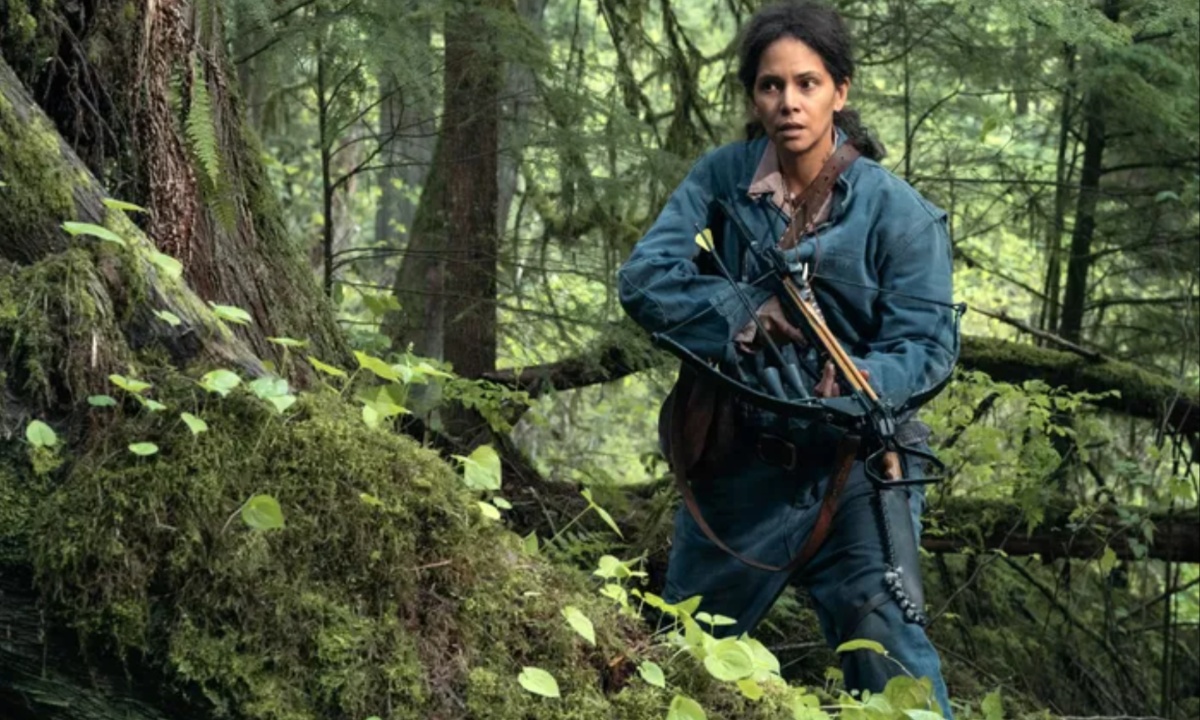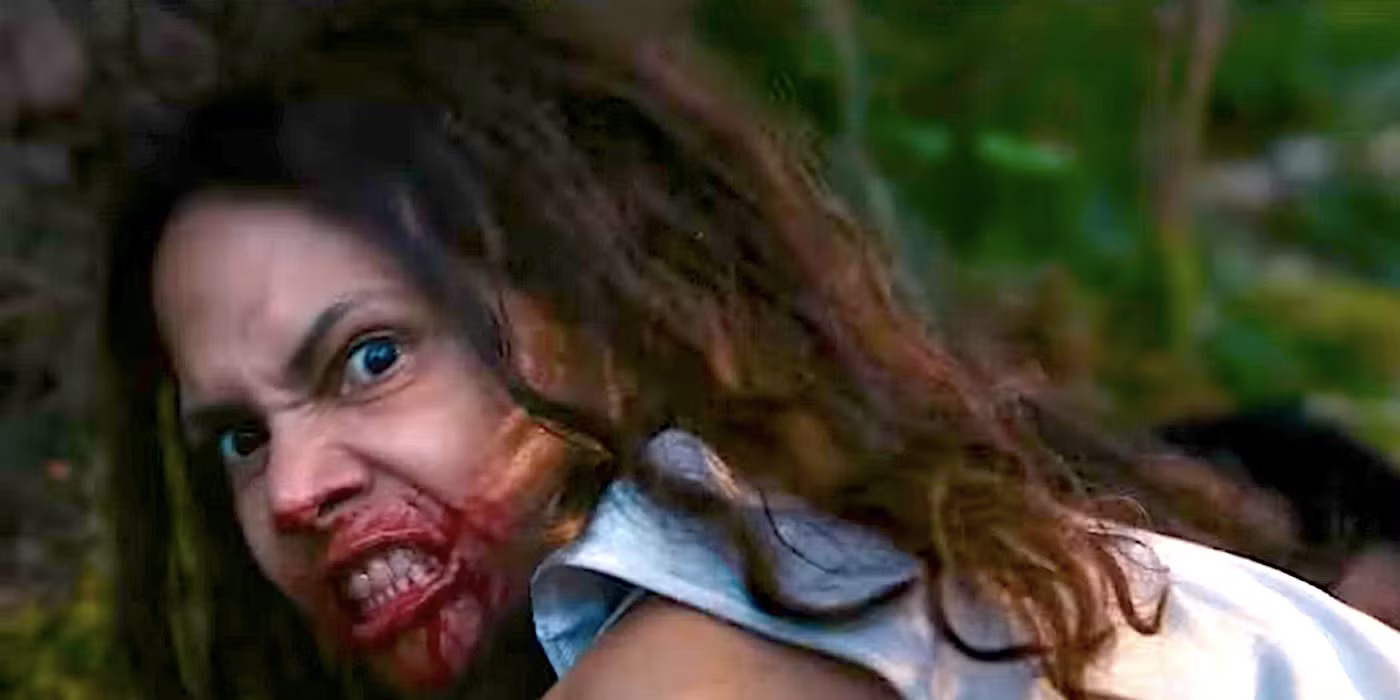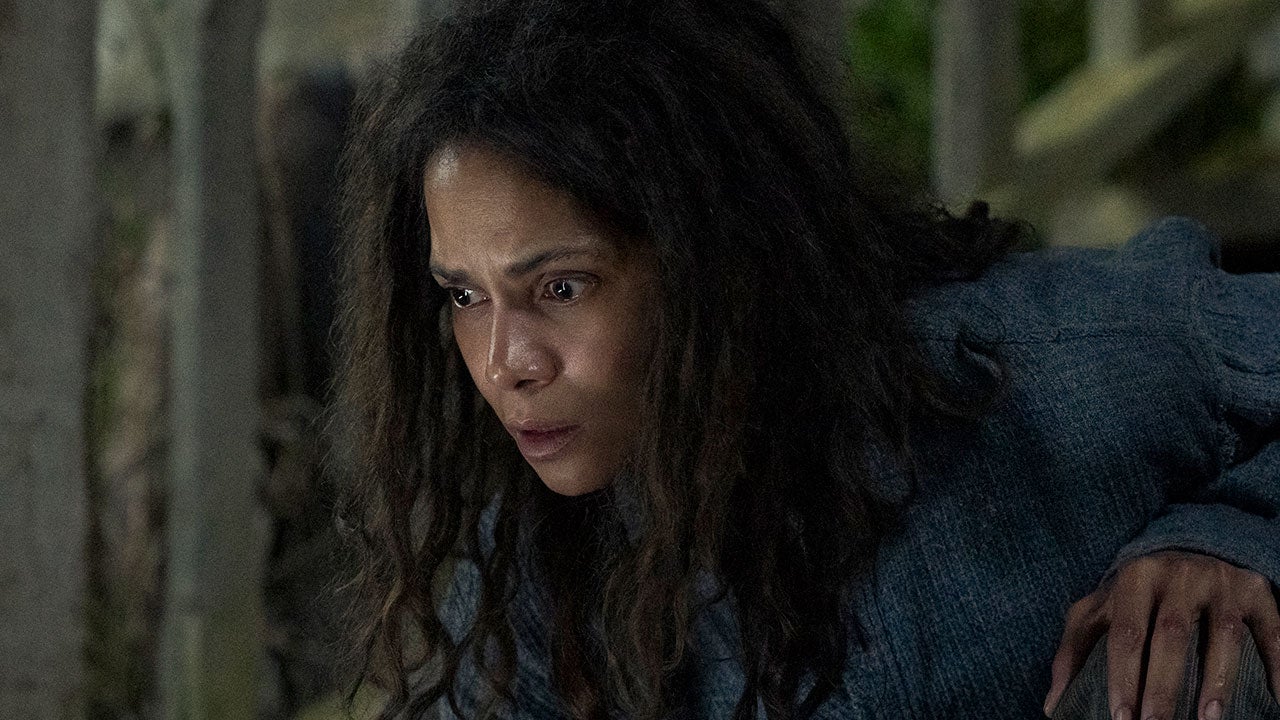Never Let Go, directed by Alexandre Aja, marks Halle Berry’s return to the horror genre, immersing audiences in a tense, psychological thriller. The film follows a mother and her two sons as they struggle for survival against an enigmatic evil in a post-apocalyptic setting. The film’s ambiguity and unreliable narration make for a gripping yet divisive cinematic experience. While critics have offered mixed reviews, Never Let Go has earned Halle Berry her highest Rotten Tomatoes score in over five years.
Set in a dense and eerie forest, Never Let Go presents a world where a mother, known only as Momma (Halle Berry), lives in isolation with her two young sons, Nolan (Percy Daggs IV) and Sam (Anthony B. Jenkins). According to Momma, “the world ended,” and they must remain in their house, which is protected from a shapeshifting evil that roams the woods. To ensure their safety, they tether themselves to the house whenever they venture outside, reinforcing the idea that the home is their only sanctuary.
As time passes, Nolan begins to question his mother’s teachings. He notices discrepancies in her warnings, especially when he and Sam find themselves untethered outside yet remain unharmed. While Sam continues to believe in Momma’s claims, Nolan’s skepticism causes tension between them.
The family’s survival is further tested when winter depletes their food supply. In desperation, Momma decides to kill their pet dog, Koda, for sustenance, but Nolan, horrified by her decision, locks her in a greenhouse without a tether. This leads to a climactic confrontation where Momma seemingly encounters the evil entity in the form of her own mother and ultimately perishes.
With their mother gone, the boys are left to fend for themselves. Their world is turned upside down when a hiker stumbles upon their cabin, revealing that the outside world is still intact and that their mother may have been either lying or suffering from delusions. This discovery triggers a tragic series of events.
A delirious Sam, still believing in the evil entity, kills the hiker in fear. Soon after, he meets the hiker’s daughter, who is later revealed to be a manifestation of the very evil their mother warned them about. The entity possesses Sam, leading to a final confrontation between the brothers. Nolan ultimately faces the entity in the form of his mother before they are both rescued by emergency responders, further complicating the film’s reality.

Ambiguity and Trauma Blur the Line Between Supernatural Horror and Psychological Fear
One of Never Let Go’s most intriguing aspects is its ambiguity regarding the existence of supernatural evil. Throughout the film, only Momma claims to see the entity, which takes the form of people from her past, often in grotesque, snake-like shapes.
Her certainty is contrasted with Nolan’s doubt, making the audience question whether she is truly protecting her sons or suffering from deep-seated paranoia. Even after her death, when Sam experiences a seemingly supernatural possession, the film leaves room for interpretation—was it truly an evil force, or was it the result of his mother’s conditioning and extreme starvation?
Momma’s fate in Never Let Go is a direct consequence of the fear that has consumed her. She ultimately dies in the greenhouse, not due to direct attack but through suicide, slitting her throat to prevent the evil from possessing her. This act is symbolic of the deep trauma she carries, as she would rather take her own life than allow harm to come to her children. Her death is a culmination of years of paranoia, religious trauma, and a desperate need to protect her family at all costs.
While the film does not fully disclose Momma’s backstory, subtle clues hint at her troubled past. The house is adorned with religious blessings, indicating an upbringing steeped in strict faith. The crawlspace under the floorboards suggests she may have been subjected to isolation as a child.
Additionally, scars on her back resemble wounds from self-flagellation, a practice common in extreme religious sects. These details imply that her attempts to shield her children from the world were born out of her own traumatic experiences, leading her to create a false reality in which isolation was the only means of safety.

Christian Symbolism and Generational Fear Shape the Horror of Never Let Go
The presence of Christian symbolism is woven throughout Never Let Go, particularly through the recurring imagery of snakes. The evil entity frequently manifests in serpent-like forms, directly alluding to the biblical story of Adam and Eve, where a snake tempts Eve in the Garden of Eden.
The film further reinforces this metaphor by placing Momma’s death in a greenhouse—a modern representation of Eden—where she is “tempted” by her fears before taking her own life. Her snake tattoo serves as another symbol, representing her past experiences with evil and fear, suggesting that the darkness she tried to escape had already marked her.
Beyond its supernatural elements, Never Let Go is an exploration of fear, grief, and the consequences of extreme parental protection. At its core, the film examines how trauma is passed down through generations. Just as Momma’s parents instilled fear in her, she, too, imposed her beliefs onto her children, albeit with the intention of keeping them safe.
However, her paranoia ultimately leads to her downfall and places her sons in greater danger. The film’s ending leaves audiences with an unsettling question: was Momma’s world truly one of supernatural horror, or was it a self-fulfilling prophecy fueled by trauma and fear?
In the final moments, as the snake entity’s hand appears in Sam’s selfie and he repeats a phrase from his mother, Never Let Go suggests that the cycle of fear and control may not have ended with Momma’s death, leaving viewers to ponder the true nature of the film’s horror.



